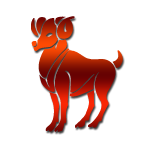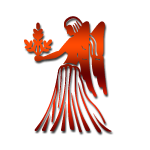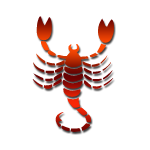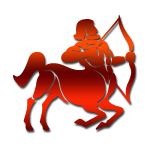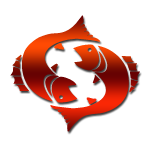Paid Services
What is Pranayama?
Author: Bala Mishra | Last Updated: Thu 15 Dec 2011 5:32:45 PM
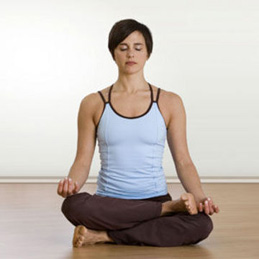
About Pranayama
Pranayama is both the science and art of purifying the nadis in the Pranamaya Kosha. Through regulated breathing i.e. altering the rhythm of inhalation and exhalation, it is possible to control the prana, vital force in the body. Pranayama is the process by which such conscious control is achieved through synchronized breathing. Purifying the channels along which the life stream of ‘prana’ flows helps prevent and even cure a variety of physical and mental ailments. In the process, it also increases one’s overall immunity and resistance to disease.
The Hatha Yoga Pradipika states that Pranayama is practiced in order to understand and control the pranic process in the body. Breathing is a direct means of absorbing prana and the manner in which we breath sets off pranic vibrations, which influence our entire being.
By becoming aware of the nature of the breath and by restraining it, the whole system becomes controlled. When you retain the breath you are stopping nervous impulses in different parts of the body and harmonising the brain wave patterns. In pranayama, it is the duration of the breath retention, which has to be increased. The longer the breath is held, the greater the gap between nervous impulses and their responses in the brain. When retention is held for a prolonged period, mental agitation is curtailed.
Through pranayama the mind can be brought under control. In many spiritual traditions, including Sufism, Buddhism and Yoga, it is known that by concentrating on the breath, you can still the mind, develop one-pointedness and gain entry into the deeper realms of the mind and consciousness.
‘Where the mind goes, the prana follows’ Thirumoolar (South Indian saint)
Patanjali covers the aims and benefits of pranayama in 2:52 where he states:
‘As its result, the veil over the inner light is destroyed’
We destroy the veil that covers the Inner Light. Prakasha, the light within, is covered by a veil of mental darkness and through pranayama the mind becomes fit for concentration (2:53)
The best position to be assumed for these practices is sukhasana or the easy pose it also happens to be the most comfortable. The critical thing to bear in mind, however, is posture. The back, neck and head should be kept erect, i.e. in a straight line. And yet, the body should not be stiff. It should be in its natural relaxed condition. You can prepare for this by practicing shavasan, the corpse pose, for a few minutes. To prepare for pranayama it is first better to breathe relaxed in the abovementioned ratio. Do this a few rounds, for a few days. The next step is to learn the knack of full yogic breathing. This is also called Dirga Pranayama the three part breath. Known as the "complete" or "three-part" breath, Dirga Pranayama teaches you how to fill the three regions of the body with Oxygen.
- The first is the belly (on top of or just below the navel),
- The second is the chest (the thorax or rib cage), and
- The third is the clavicular region (or upper chest, near the sternum).
What is Pranayam : Techniques
Sit in sukhasana or any other comfortable position with back, spine, and neck erect. Alternately you may even lie down on your back. Start by taking slow, long, and deep nasal breaths.
As you inhale, let your abdomen fill with air. As you exhale, let your belly deflate like a balloon. Repeat the exercise a few times, keeping your breath smooth and relaxed. Never strain.
Breathe into your belly as in Step 2, but also inflate your thoracic region by letting your rib cage open up. Exhale and repeat the exercise a few times.
Follow steps 2 and 3 and continue inhaling by opening the clavicle region or upper chest. Exhale and repeat the exercise a few times.
Combine all three steps into one continuous or complete flow.
Once you have got a good feel for this style of breathing, start practicing without the aid of your hands. Finally, relax and breathe in the three positions quietly feeling the waves of breath move in and out, up and down the body.
What are the benefits of Pranayama
The practice of Dirga Pranayama inculcates correct diaphragmatic breathing, relaxes the mind and body, optimally oxygenates the blood and cleanses the lungs of residual toxins.
For all Pranayama the right fingers and thumb should be used to control the right and left nostrils, unless one is otherwise naturally left-handed. A ratio of two to one is generally maintained, that is, the inhalation time should be half that of exhalation. For example, if inhalation takes 5 seconds, exhalation should take 10 seconds. Breathing should be slow and steady, in and out of the nose, unless otherwise advised.
Not all Pranamayas can or should be mastered in a day or week or month. The process may and should take a few months. Even after that, it is not necessary to do all 8 Pranamayas daily. The daily mandatory Pranamayas are Kapalabhati and Anuloma Viloma. The rest may be done at one’s own convenience
What are Pranayam - Types
The 8 Pranamayas are:
- Kapalabhati
- Anuloma Viloma
- Ujjayi
- Bhastrika
- Shitali
- Sitkari
- Suryabhedana
- Bhramari
Take into consideration your own time and convenience but see that all 8 Pranayamas are covered in a week. The same goes for asanas.
But remember, even though Kapalabhati is not a Pranayama, yet it is a vital part of the program. As the name suggests it is a cleansing technique in preparation for Pranayama and should be done every day, without fail .For optimum benefits, yoga practices should be coupled with a balanced diet, Naturopathy, Ayurveda and Aromatherapy. Best quality gemstones with assurance of AstroCAMP.com More
Best quality gemstones with assurance of AstroCAMP.com More
 Take advantage of Yantra with assurance of AstroCAMP.com More
Take advantage of Yantra with assurance of AstroCAMP.com More
 Yantra to pacify planets and have a happy life .. get from AstroCAMP.com More
Yantra to pacify planets and have a happy life .. get from AstroCAMP.com More
 Best quality Rudraksh with assurance of AstroCAMP.com More
Best quality Rudraksh with assurance of AstroCAMP.com More
Get your personalised horoscope based on your sign.

